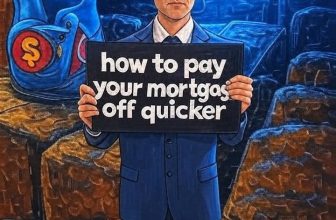(Nov 29, 2023)
Don’t want to miss out on the next blog post? Click Here to have future issues emailed directly to your inbox!
While the terms renewal and refinance may seem interchangeable, they represent distinct differences. “Mortgage renewal” is the classification given to a mortgage application that is simply renewing to a new interest rate and term. No new funds are requested at maturity; the mortgage principal maintains its balance and continues on the path of its existing amortization schedule. “Mortgage refinance” is when new funds are added to the existing mortgage principal, resulting in a larger mortgage amount and the option to alter the amortization schedule.
Determining whether it’s a renewal or a refinance mortgage is important for a couple of reasons. Firstly, when it comes to interest rates, you are likely to get a better rate when renewing your mortgage. There are opportunities to get similar rate offerings for refinances, but a few backend specifications of the existing mortgage have to line up (I’ll defer to these details in a future post). After the rate difference, the next significant consideration against refinances is the inclusion of administrative fees. As mentioned above, when completing a mortgage renewal, there is no cost to you (the applicant). However, for refinances, there are a couple of fees to be aware of: appraisal and legal. Depending on where you live in Canada, your legal fee will range from $600 to as high as $1,800, depending on the complexity of the refinance (the more items the lawyer is instructed to pay out, the higher the legal fees). The appraisal fee depends on the property’s size and its proximity to the nearest appraiser, usually around $250 to $400 per appraisal. In most instances, fees get worked into your equity and get tacked on to the new mortgage balance, sidestepping any potential for out-of-pocket expenses.
Mortgage Renewal Key Points
Although adding new funds to an existing mortgage balance at maturity would deem the mortgage a refinance, there is a small allowance for new funds to be added for mortgage renewals. Most lenders will allow for a one-time bump up of $3,000 to cover potential fees or payout penalties of the outgoing lender (when I say bump up, I mean the $3,000 getting tacked on to your new mortgage principal). This is a great loophole for those who prefer to renew ahead of their maturity date, rather than paying the break penalty; they could tack on the outgoing penalty fee to their renewed mortgage (provided their break penalty is less than $3,000). You could also increase your mortgage balance and still be deemed a mortgage renewal if your existing mortgage has an existing HELOC or collateral charge. This is comparable to a pre-approved mortgage principal booster that can be activated at any time in the future. If you are currently in a mortgage with an additional component like a HELOC, this applies to you. If any of your existing HELOC is unused prior to your new renewal, you can simply draw the unused portion and claim it as your renewed mortgage principal at the time of the renewal—a great little hack to classify your mortgage as a renewal, thereby qualifying for fully discounted rates and a fee-free transaction (no legal costs, no appraisal costs). Remember the two key points of mortgage renewals: (i) lower rates (most of the time), and (ii) no legal fees to complete the transaction.
Mortgage Refinance Key Points
The most common triggers that result in a mortgage refinance are increasing your mortgage balance and expanding your amortization. Increasing your amortization at renewal time is technically allowed, but it is limited. Essentially, you only have the option to revert back to the starting amortization since your last mortgage event. For example, if your mortgage is coming due next month, and the remaining amortization is at 20 years, you would have the option of renewing back to its starting amortization period since your last mortgage transaction event. So if your amortization was initially set at 25 years, you could technically reset the amortization accordingly. Conversely, for a mortgage refinance, you can reset the amortization as high as 35 years if you so desire. But heads up, for every 5-year increase of amortization that you seek after 25 years, some lenders will add a premium to the interest rate. The most common gateway to a mortgage refinance is the good old debt consolidation. This is when you pay off a bunch of high-interest debt like credit cards and other consumer loans, rolling them all into your new mortgage, which significantly reduces your monthly mortgage payment (thereby eliminating all your other monthly payments of the previous debts you just consolidated). Simply put, it’s the big reset or game-changer for many embroiled homeowners who were looking for a break and some extra breathing room. In summary, any change to an existing mortgage essentially deems the mortgage transaction a refinance. The following are some of the more common changes that lead to a mortgage refinance: removing or adding someone to the mortgage, increasing the mortgage amount, and expanding the amortization.
In Summary
It’s important to understand the distinction between mortgage renewal and mortgage refinance. While a renewal typically offers better interest rates and involves minimal costs, a refinance allows for adjustments in both the mortgage amount and amortization schedule. Key considerations include potential administrative fees associated with refinancing, as well as the flexibility of adding small funds during a renewal. Ultimately, whether it’s the pursuit of lower rates or the need for a financial reset through debt consolidation, recognizing the nuances between these two processes empowers homeowners to make informed decisions tailored to their unique circumstances.
Make sense? Call or text Marko Gelo right now at 604-800-9593, or Click Here to schedule a free, no-obligation phone call with Marko. You can also call Marko on WhatsApp.
Don’t want to miss out on the next blog post? Click Here to have future issues emailed directly to your inbox!
Contact Marko, he’s a Mortgage Broker!
604-800-9593 cell/text | Vancouver (Click Here to schedule a call with Marko!)
403-606-3751 cell only | Calgary (Click Here to schedule a call with Marko!)
Email: gelo.m@mortgagecentre.com
@markogelo (Twitter)






